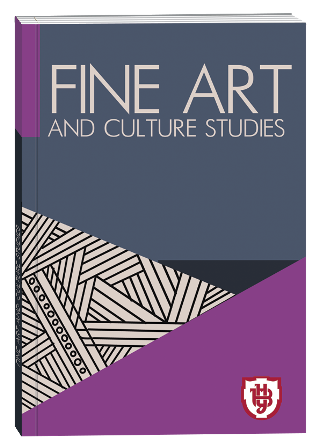INTERPRETATION OF THE ENSEMBLE IN J. BRAHMS PIANO QUARTET № 3, C-MOLL OP. 60
DOI:
https://doi.org/10.32782/facs-2022-1-16Keywords:
piano quartet, ensemble with the piano, genre, chamber music, J. BrahmsAbstract
The article reveals the specifics of ensemble texture in the genre of piano quartet on the example of the work of J. Brahms op.60. In the process of analysis it turns out that the sympyonism inherent in this piece is embodied by the composer in variational means, where an important role belongs to the thematic origin and motive work. In the Brahms’ interpretation these means act as the representatives of chamberness, which is implemented by texture capabilities of the instrumental ensemble of this composition. The purpose of this articale is to identify the ensemble features of the Brahms Piano Quartet in c-minor №3 op.60, taking into account the specifics of the genre of the work, its dramaturgy and formatting. The methodology of research consists of genre approach, which reveals the typological essence of the piano quartet, stylistic and intonation-thematic approaches, which determines the interdependence of the compositional and ensemble writing. The scientific novelty of the results of the article shows that the Brahms Piano Quartet №3 in с-minor op.60, its dramaturgy and artistic content are considered from the standpoint of ensemble score, which includes the concepts of concert, symphony and chamber music. Conclusions. J. Brahms’ Piano Quartet №3 combines the concert-symphonic scope of the author's thought and chamber writing, which are manifested in the extraordinary detail of the motive-thematic process, covering both horizontal and vertical musical score. There is also a tendency in the disclosure of the acoustic and sound potential of the ensemble, which is embodied in a wide range of sonorous volumes – from comprehensiveness to maximum coagulation. Based his Piano Quartet on four-part sonata cycle, Brahms avoids dramatic monotony, varying the character of each part and actively using the established methods of intonation and figurative techniques, summarizing the creative experience of German instrumentalism of the classical and romantic eras.
References
Кокорева Л. М. Й. Брамс. Камерные инструментальные ансамбли. Музыка Австрии и Германии XIX века: учеб. пособие. Москва : Музыка, 1990. Т. 2.528 с.
Повзун Л. И. Камерність як жанрово-стильова парадигма інструментально‒ансамблевої творчості : дис. … д-ра мистецтвознавства : 17.00.03. Одеса, 2018. 480 с.
Польская И. И. Камерный ансамбль: История, теория, эстетика: монография. Харьков, 2001. 396 с.
Самойлова Н. К. Фортепианный квартет в русской музыке: автореф. дис. … канд. Искусствоведения : 17.00.02. Оренбург, 2011. 22 с.
Седюк І. Тенденції розвитку ансамблю для двух фортепіано в музиці ХХ століття: автореф. дис. ... канд. мистецтвознавства : 17.00.03. Харків, 2018. 20 с.
Слупський В. Становлення та розвиток ансамблю мідних духових інструментів від витоків до кінця XVII століття: автореф. дис. … канд. мистецтвознавства : 17.00.03. Харків, 2018. 19 с.
Смірнова І. Ансамблеве письмо в камерно-інструментальних творах для змішаних складів у творчості німецьких композиторів XVIІI-ХІХ століть: автореф. дис. … канд. мистецтвознавства : 17.00.03. Суми, 2020. 213 с.
Храмова И. М. Камерно-инструментальные ансамбли Брамса (трактовка жанра и драматургии): автореф. дис. … канд. искуствоведения : 17.00.02. Киев, 1989. 22с.
Царёва Е. М. Иоганнес Брамс: монография. Москва: Музыка, 1986. 383 с.
Чайковська К. Ансамбль скрипалів в жанровій системі музично-виконавського мистецтва: автореф. дис. … канд. мистецтвознавства: 17.00.03. Суми, 2018. 20 с.
Smallman B. The Piano Quartet and Quintet: Style, Structure, and Scoring. London: Oxford University Press, 1994. 208 р.







